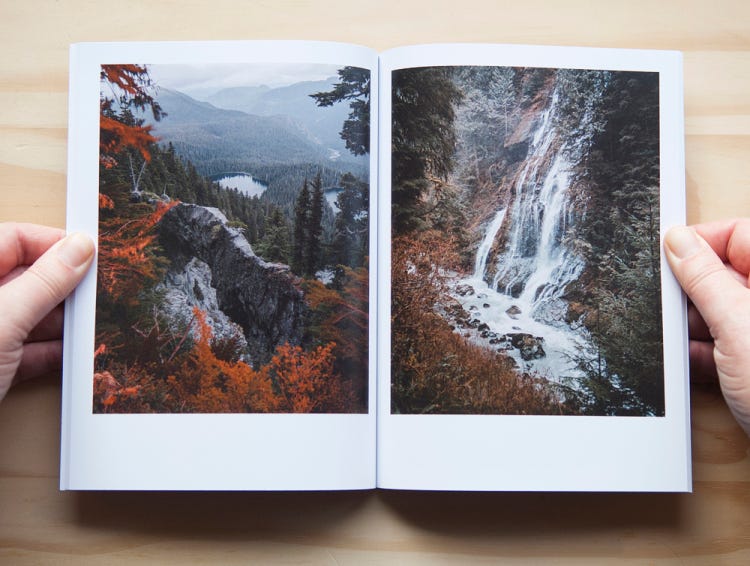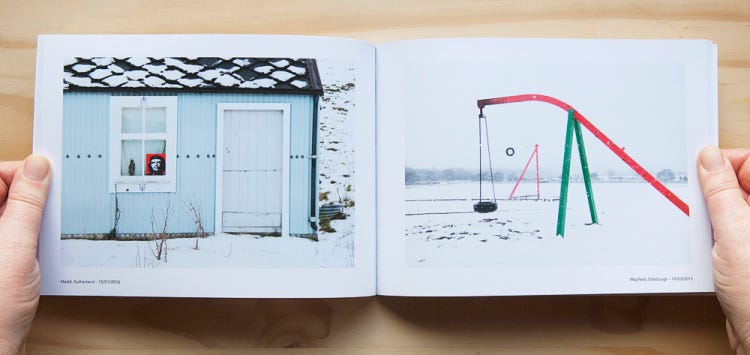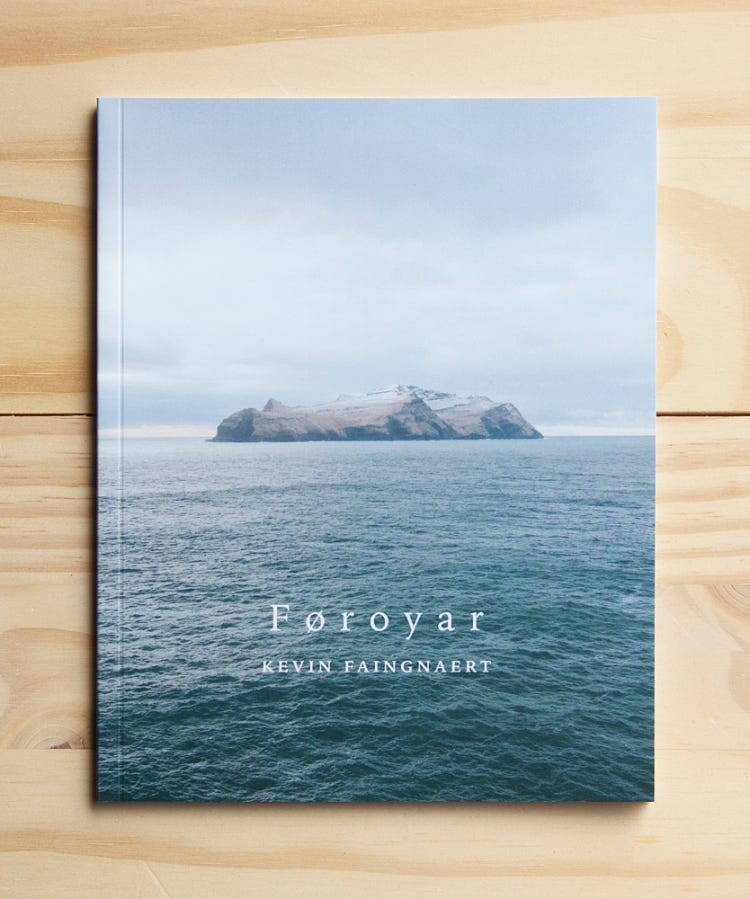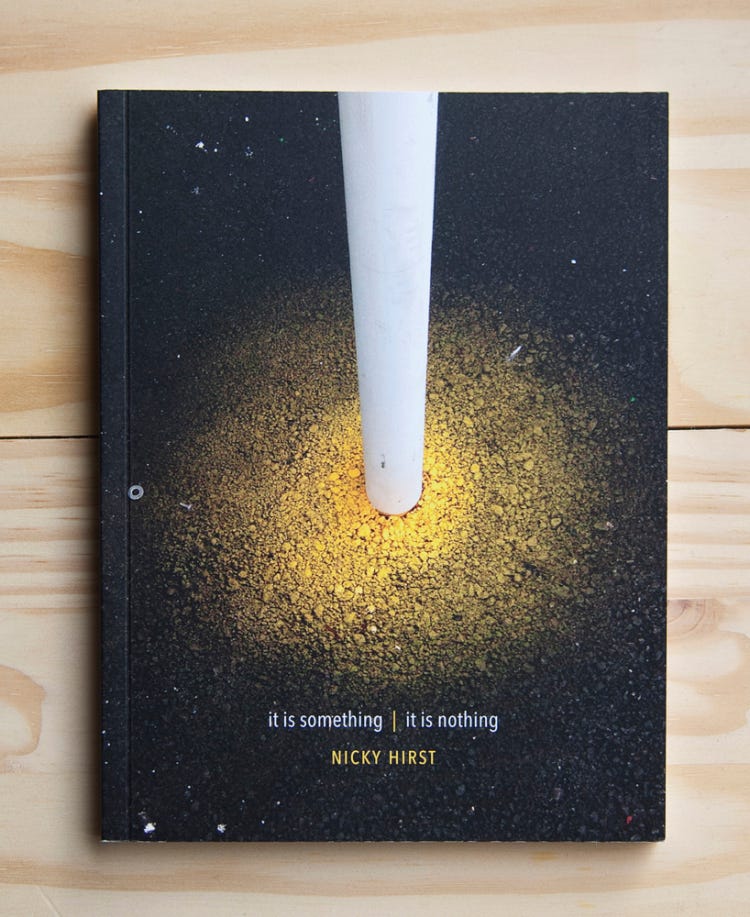The New Publishing Landscape: In Conversation with Iain Sarjeant of Another Place Press

Iain Sarjeant is a photographer based in the Highlands of Scotland who founded the Another Place Press as a small independent publisher to showcase contemporary landscape photography. To date he has published nine books that explore landscape covering themes documenting the land, place, journey, city and environment from the remotest corners of the globe to the centre of the largest cities. It’s an ambitious premise and even more so as the imprint consists of just one employee. Iain is that employee and his responsibilities include all aspects of publishing the books, running the blog, all social media and continuing to work as a commissioned photographer as well as progressing his personal projects. Despite this he spared sometime to talk with Grant Scott about the current independent publishing landscape and his personal experiences in establishing his own publishing company.
Grant: I hear and read a lot of discussion amongst photographers about photobooks but very little about publishing, which is something we are all doing every day even if we are not aware of it. Every time we write a tweet or post on Facebook or Instagram we are publishing, but the art and complexity of publishing is rarely understood. I’m also not sure if photographers are comfortable with being referred to as publishers.
Iain: It’s become relatively easy to produce a photobook which is exciting, but I think there is a need to think through the process carefully, in particular how to sell decent quantities of a book, if that is the goal. In many ways, the marketing and selling is the most challenging part of the process. I have a background in graphic design and a knowledge of the print and design process — I am comfortable handling everything in-house and have decent connections with printers, but I’m no publishing expert. Another Place Press developed out of the Another Place blog, which I started a few years ago, and right from the start I hoped that it would develop into a publishing project. I was inspired by small publishers such as The Velvet Cell www.thevelvetcell.com, I loved what they do — Eanna has a real eye for design. I also feel design is very important — of course a book needs a strong series of photographs that work well, but you cannot underestimate the importance of design.
Grant: There seems to be a strong collaborative sense amongst independent publishers.
Iain: Absolutely, Eanna, the founder of The Velvet Cell was very supportive in helping me establish Another Place even though I could be seen as a potential competitor. Craig Atkinson at Café Royal is producing great books and I know Al Palmer at Brown Owl Press, but there are not that many publishers releasing the kind of small books we are producing. I started with small books partly for financial reasons, but I do like their size — good quality small books produced at a reasonable price that everyone can afford. I very much like the idea of them being affordable, accessible to all.
Grant: I’m completely with you on the affordability aspect of the publishers books you’re talking about. But in addition to that by publishing the books you’re utilizing a lot of transferable skills that I feel other photographers could also either adopt or learn to help them expand their photographic practices.
Iain: The difficulty with any publishing venture is building an audience — you can have a thousand followers online but only a small number of them are going to put their hands in their pockets and spend twenty pounds on a book. Self-publishing is a challenge for photographers, but a very rewarding process. A book often seems to be a natural outcome for a project or body of work. But creating an audience takes time and a lot of work, and many photographers maybe don’t want to spend so much time marketing their title online. It’s not for everyone.
I set up the Another Place blog because I have a real interest in landscape photography and wanted to share some of the great work I came across. The site has become very popular and I get maybe ten project submissions a week now. The success of the blog has been brilliant because it has created an audience for the books I now produce — people interested in the subject matter and style that I publish.
Grant: You were successful quite quickly.
Iain: The publishing side was successful very quickly, which took me by surprise, the first three books sold out within two months of me publishing them — it’s less than a year since the first book — but I think that was down to the fact that I had spent the time developing the blog. I’d built an audience for the books almost without realizing it. I’ve been online for many years now and have an audience for my own personal photography too, so the combination of my audience and the blog audience I think allowed me to hit the ground running.
Also, for the first few titles I felt it was important to choose photographers that had their own online followers and would promote the books themselves to their audiences.

Grant: That demonstrates an understanding of the key commercial realities of publishing, promotion, marketing and distribution.
Iain: Yes, I think they, like me, had that understanding — the importance of promoting their work online, which not all photographers do. Of course it’s a balance — actively engaging with your audience but not over-promoting. The first two books were by Al Brydon and Dan Wood, who are friends of mine. I think they both gauge that balance very well, and understand the importance of spreading the word online. This was important for me as I needed the first few titles to do well to give the Another Place Press a kick start going forward. As APP becomes more established and as the audience for the books grows, I hope to be able to publish photographers who are maybe less well known or completely unknown if their work is strong enough. I’ve been very lucky — the online community has been very supportive of what I’ve been trying to do with APP and have helped me promote our books.
There is a curation element to publishing which I enjoy. I publish quite a narrow field of books focusing on landscape or ‘place’ but I’m also aware the books published reflect my taste in photography. I think that if you create a style of books (both design of books and photography featured) and people like them, then they support the project. We’ve had several people who have bought all nine of the books we’ve published. The hope is that, gradually, as we become known for a certain style of books, this will allow us to be able to publish projects by less well-known photographers, helping promote work that deserves a wider audience.
Grant: We both come from a graphic design background. Do you think that makes it easier for you to be more open to the idea of being a photographer and publisher?
Iain: I definitely think so. The design and printing process involved in creating a book can be daunting to a lot of photographers.
I didn’t study photography — my entry into the photography world was through commercial work, initially. Early on, working as a graphic designer I was working with other photographer’s images in the publications I was designing. As my photography developed, I started using my images and that gave me the idea to try promoting my own work. I began photographing landscapes for tourist organisations and magazines which gave me an understanding of commercial side of photography — commissions, stock etc.
At the same time, I was developing my personal work, so I was a bit of a chameleon, juggling areas of work just as I do today.
Grant: It’s interesting that you are using commercial understanding to sell what to many would be perceived as being uncommercial books.
Iain: Absolutely. Although the work I am publishing is very much photographer’s personal work, the project has to be approached in a commercial way. I launched APP first and foremost to promote exciting landscape photography, but the model has to work commercially as well. The photobook world is quite small, ultimately the people who buy our books are often other photographers. I’d like to try to find ways to expand that audience, to reach people not necessarily involved in photography. That’s a challenge for Another Place Press moving forward.
Grant: You’ve published a book of your own work as well as that of other photographers, do you find it difficult to find the time to devote to your photography and the publishing?
Iain: Yes, it can be tricky. Finding enough time is always tricky! I can’t afford to do either for nothing, so the publishing does have to be a commercial concern.
Within the publishing model I have developed, it is important to me to pay each photographer royalties on every book sold. I believe that the book is a collaboration between the artist and the publisher, and therefore the photographer should receive payment, not a huge amount I’m afraid — the margins on these books are quite small — but a royalty based on the cost of the book. This can make the financial side of publishing even more challenging but it is an important principle for me.

Grant: By embracing and understanding publishing you’ve placed your own work within a larger body of contemporary landscape photography.
Iain: Absolutely. My Out of the Ordinary series — http://iainsarjeant.tumblr.com — is a good example of that. People had been suggesting that I publish a book of that work for a long time, Another Place seemed like the perfect vehicle to do this with, but I didn’t set up APP to publish my own work. I will do if I think the work deserves it but I don’t want it to be seen as a self-promoting tool.
Currently I approach people whose work I’d like to publish and fits what I am trying to do as a publisher, but I do intend to open up to submissions in the future. Despite receiving many submissions, there are a limited number which contain what I’m looking for. Sometimes it feels that a project needs more development… or sometimes the idea can be great but the images need further editing, or simply that the photographer maybe hasn’t worked through the idea fully.
Grant: A sense of narrative is so important when developing work towards a book.
Iain: I hold my hands up and admit that I’ve struggled with narrative in my personal work. I don’t tend to start a project knowing where it’s heading, my approach is to go out and make work, edit it and repeat that process until a project starts to develop. That’s how the Out of the Ordinary work came about — it very much developed instinctively.
Grant: There seems to be a resurgence in both the creation and interest in landscape photography.
Iain: I totally agree, and part of the reason for creating Another Place was that I hadn’t come across any sites online that were celebrating and promoting contemporary landscape work specifically. There is also a real interest and resurgence in nature writing including ideas of landscape & ‘place’, not just within photography.
Grant: Do you think that’s as a reaction to the digital world?
Iain: Maybe, yes, as a reaction to the technological or digital world, I think people are maybe drawn to looking at our relationship with the land. Within photography I think there is some great work being made, thoughtful work. I feel positive in a publishing sense going forward.
Grant: I do believe that photographers today are publishers.
Iain: I suppose they are in a digital sense. I’m not saying that all photographers should be publishers in the traditional sense, many don’t want to get involved with the promotion and marketing that involves.
Grant: But in a sense your approach to publishing is both traditional as it is in print form but also modern in that you are producing artefacts at a price that seems more relevant to today than an expensive weighty tome or monograph.
Iain: I love big photobooks and I enjoy sitting down with a large coffee table book but they are not reaching a big audience. I like the democratic nature of something small and the fact that my books are affordable for all. The temptation is to try to grow Another Place Press into a publisher producing larger hardback photobooks, but I’m not convinced I want to go down that route. I like the format of our books so far and the price they are available for, and want to build on that for now.
Grant: When I’m teaching, I encourage photography students to both self-publish but to also understand the concept of being a publisher.
Iain: I think that’s important, not necessarily for commercial reasons but so that they can go through the process. I do think the process of preparing a body of work for a publication including the design choices is an important one, and I think that students can learn a lot from it — editing, sequencing, design all make you examine and rethink the work.
Grant: What would your advice be for any photographers reading this.
Iain: My advice based on the submissions I get sent would be don’t rush. I think photographers sometimes feel that they are ready to publish a body of work too early.
I quite regularly like the concept behind a submission but feel it needs more work — of course I am not an expert, judging purely on my own personal taste & experience. Editing too is a very important part of the process — keep editing your work as you develop a project — submissions are sometimes let down by the inclusion of weaker images, or images that don’t seem to fit in with the overall concept. When it is ready then I believe that self-publishing can be a good idea, or approach a publisher like APP or one of the many other small independent publishers doing similar things to us worldwide.

Grant: I think it’s an interesting proposition to present to photographers that instead of trying to self-publish why not consider setting up an imprint as you have done and then publish their own books amongst others whose work they admire as you have done.
Iain: I wouldn’t say it was for everyone as it does require a range of skills as we have discussed, but I think that there is a core of photographers that may choose to go down this route.
Grant: But by publishing other people’s work you go on an incredible learning curve that must be invaluable when you come to publishing your own work.
Iain: That’s very true. It’s been a fascinating experience working with all the different photographers I have published and seeing the different approaches to producing a book. Some present me with a completely edited body of work in the order they want them to appear in (which I might challenge here and there if I think it can be slightly improved upon). Others present me with 300 images that we need to edit down to 50 or so, and they want help with the edit, they’re looking for the publisher to help bring a body of work together into a book. I love that difference in approach — each book is a different experience!
Grant: Can you think of one thing that a photographer needs to consider when it comes to publishing a book of their own work or under their own imprint.
Iain: I know I’ve said it before but audience is key, because selling is the most difficult part. Most photographers can learn some basic design skills, about print process’s and paper, but if you haven’t developed an audience to buy your book, and a way to reach them, you may be left with many copies unsold.
Grant: And that means an online/social media audience.
Iain: That is a massive part of it. I’d love to find a way to make it work offline more as well but that is far more challenging, especially where I’m based. I currently sell all my books online, through the APP store, unless a photographer has an exhibition and then we might sell copies through the gallery.
I can’t realistically do book fairs and festivals because I’m based in the Scottish Highlands and it would not make economic sense for me to travel to them. This is a shame as they are really exciting events and would be a chance to engage face-to-face with our customers and other similar publishers. So, for now our online audience is the key to Another Place’s success. However, it’s important to remember social media is a two-way engagement. As I said, I think it is a mistake to use it purely to promote yourself all the time, and I certainly get a bit turned off when I see that. I have made many good friends online and will always use it to promote other photographer’s projects. For me, based where I am, it offers the chance to discover a wide range of exciting photography from around the world, while also providing an opportunity to promote and sell APP’s books to a potentially huge online audience.
You can follow Iain on Twitter @iainsarjeant and @anotherplacemag and @AP__books
http://anotherplacepress.bigcartel.com
iainsarjeant.co.uk
Grant Scott is the founder/curator of United Nations of Photography,
a Senior Lecturer in Editorial and Advertising Photography at the University of Gloucestershire, a working photographer, and the author of Professional Photography: The New Global Landscape Explained
(Focal Press 2014) and The Essential Student Guide to Professional Photography (Focal Press 2015).
You can follow Grant on Twitter and on Instagram @UNofPhoto.
Text © Grant Scott 2017